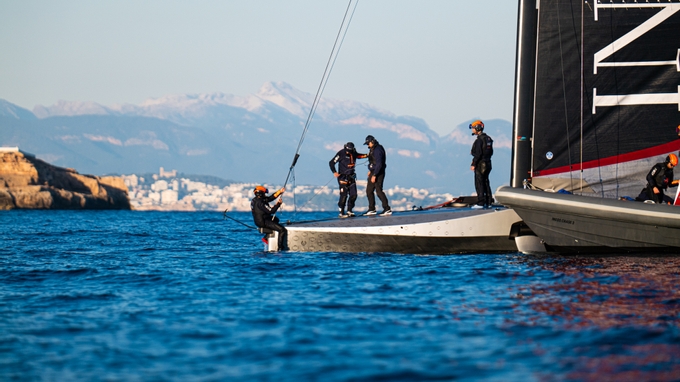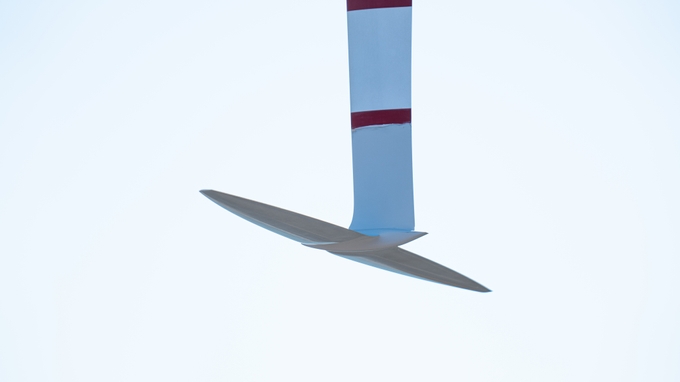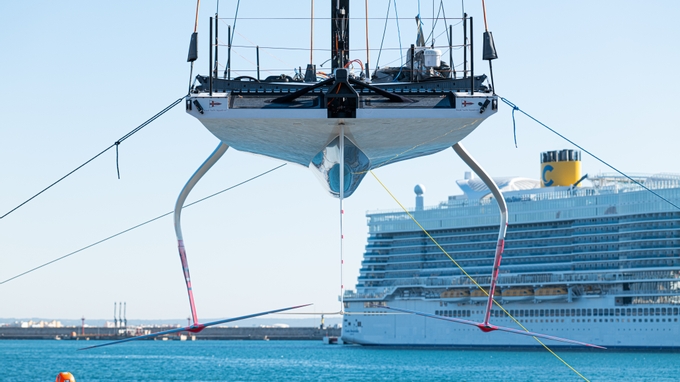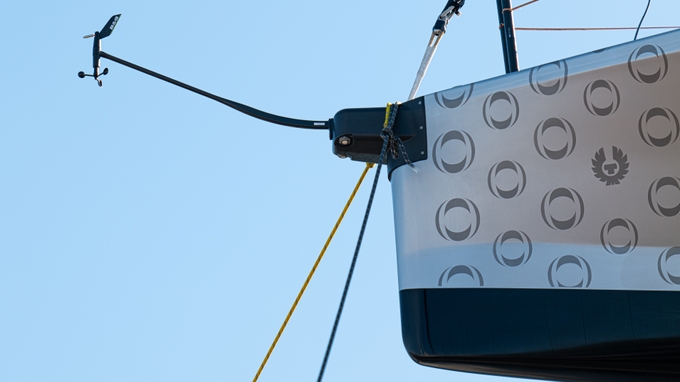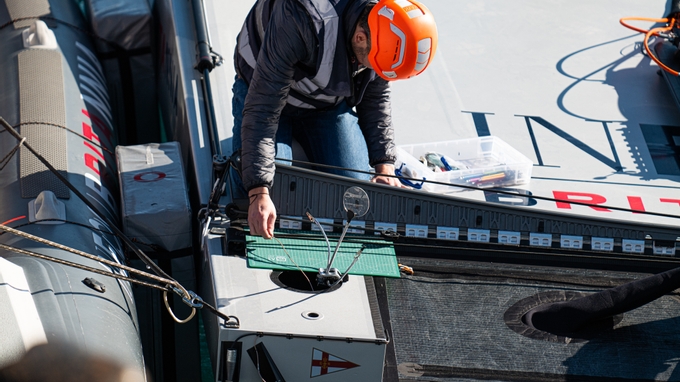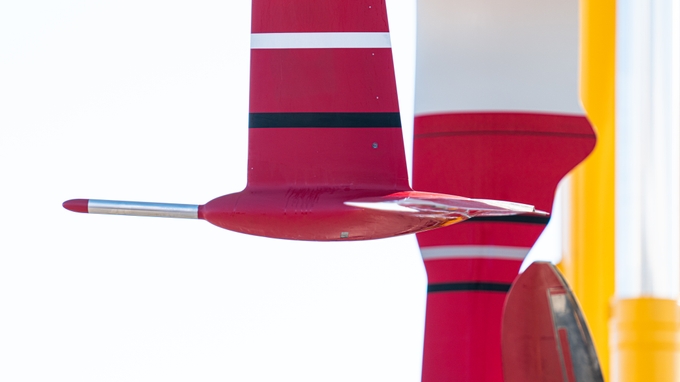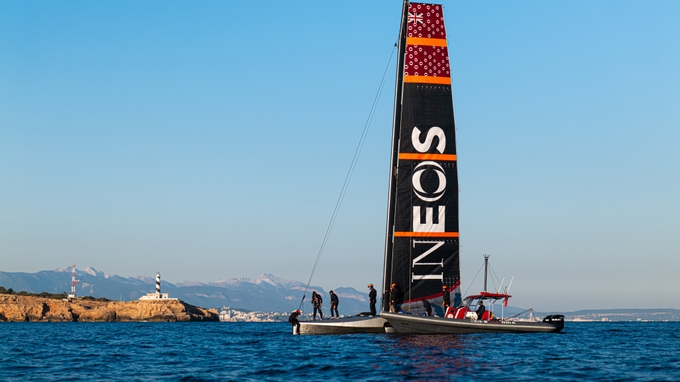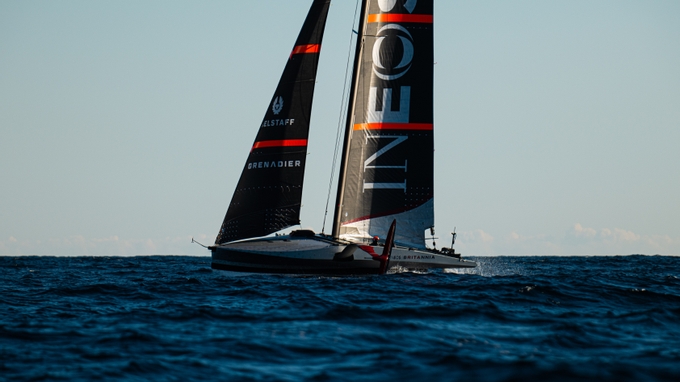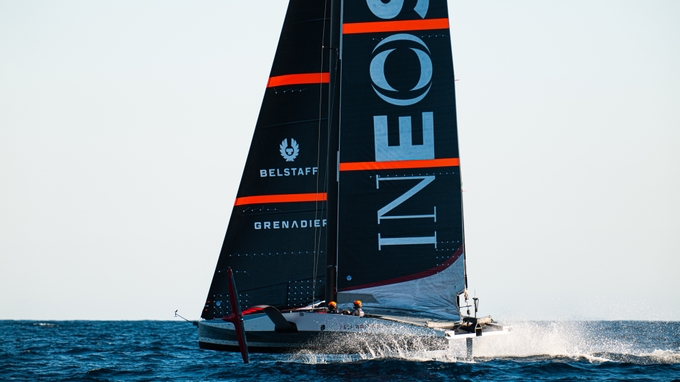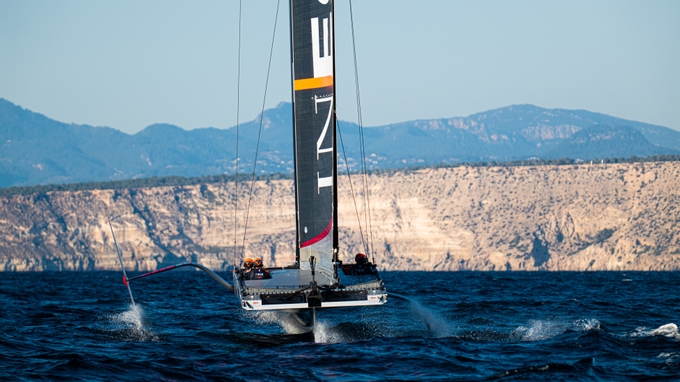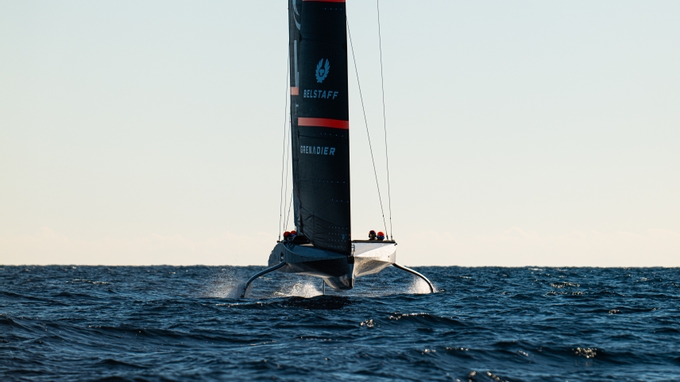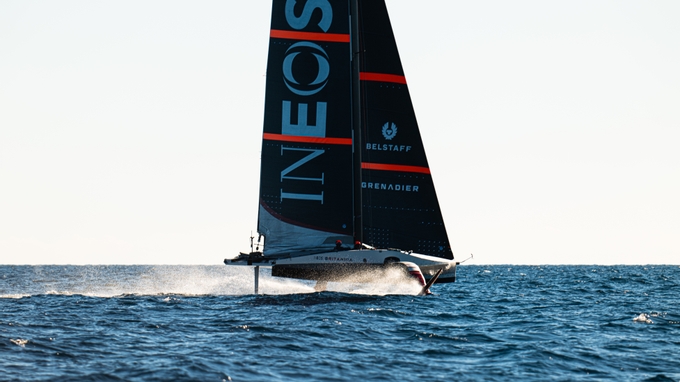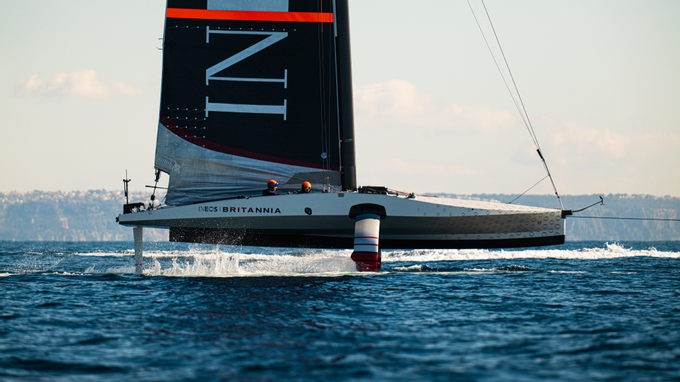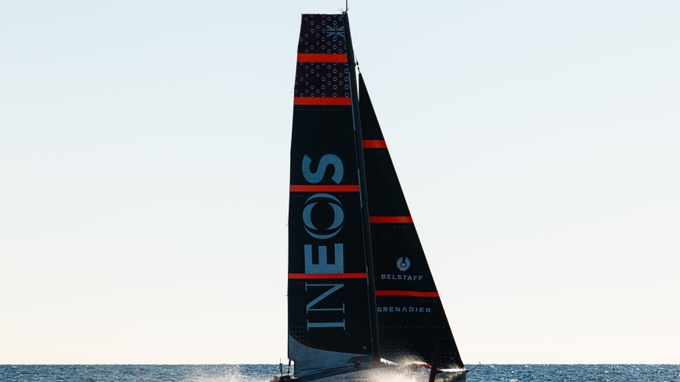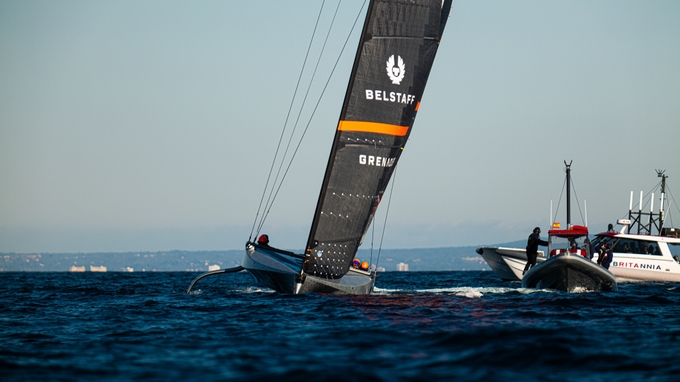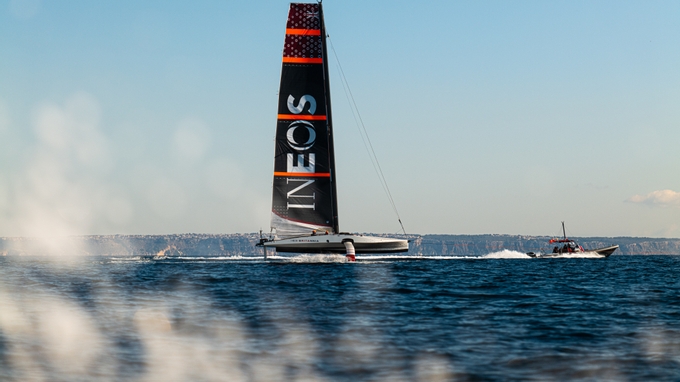LITTLE BY LITTLE
Is spring around the corner? If you were in Palma today, you would certainly have thought so as a gentle breeze in the city ushered in an unseasonably mild 15-16 degrees and whilst that was welcome news to the shore team of INEOS Britannia – some even broke out the shorts – for the sailors it was a case of making the best of the day and towing far offshore to capture the afternoon zephyrs.
Sir Ben Ainslie came back onboard, alternating wheel time with Giles Scott, and the senior test team of Luke Parkinson, Leigh McMillan and Iain Jensen rotated in the flight control and trimming positions. Plenty of new tech was spotted today by the recon team with what looked like laser optic ride height sensors embedded into the bow plate housing the wind wand and forestay ram whilst most noticeably on the sails were heavily enhanced orange camber strips up aloft. With so much concentration from all the teams in this cycle having been spent in the early parts of testing the lower third mainsail control systems, what all the technicians and sailors now seem to be focussing on is the effect up top. In the slightly marginal conditions of today and the choppy sea-state, mainsail control was key and the huge ‘fanning’ that INEOS Britannia were able to generate today, often with the mainsail traveller car above the median line certainly helped with maintaining power and flight.
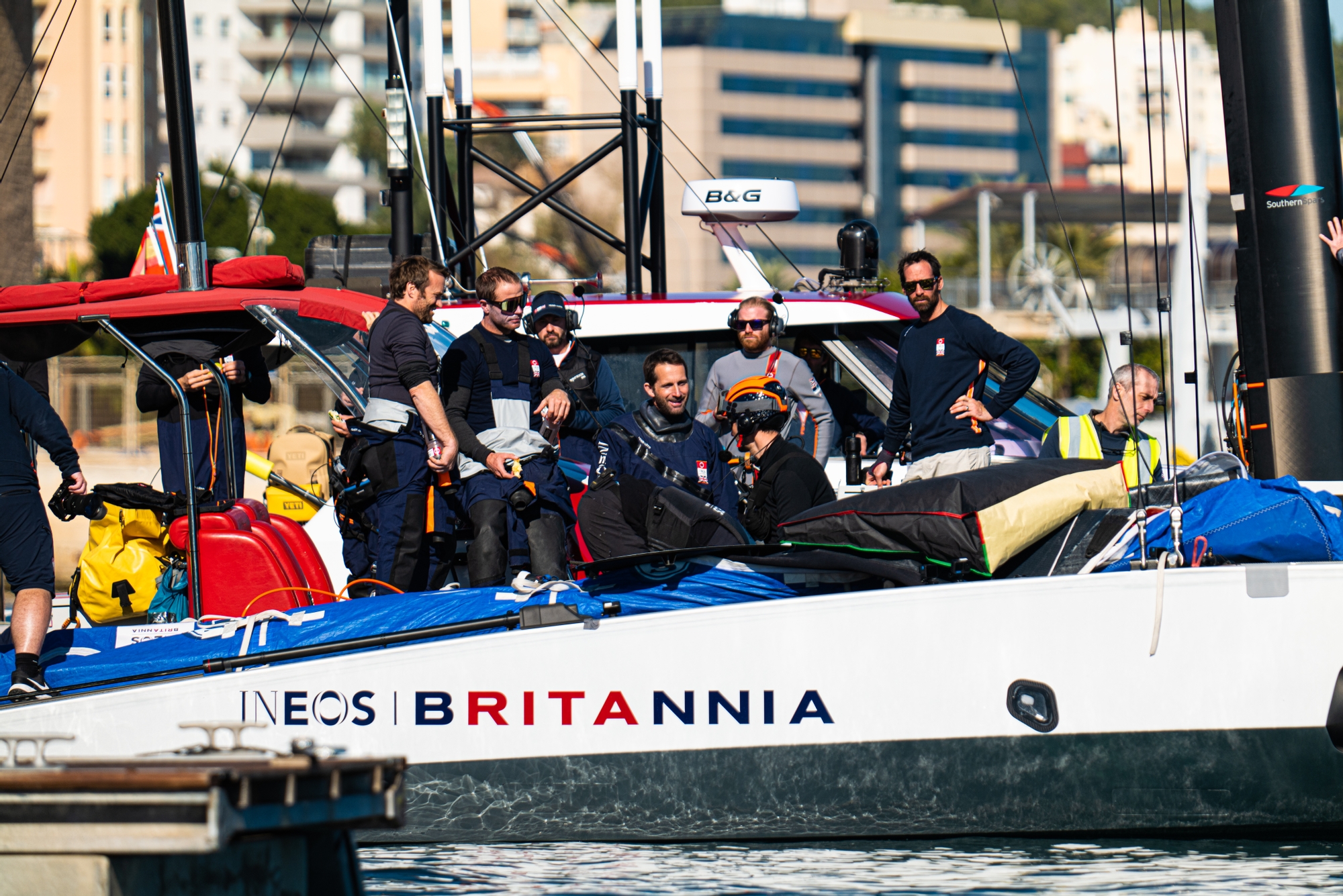
Also observed by the recon team were a series of practise take-offs and one thing that T6 has really shown in the stickier conditions is its ability to ‘pop to flight’ with consummate ease. Clearly the team are on to something with this and an early practice session drill saw multiple take-offs - target speed attained - before splash down and repeat, proved that the British really are making strides in this area – crucial perhaps in Barcelona if conditions are marginal.
The superb Rob Wilson, ‘supercoach’ to INEOS Britannia (the job title has stuck) was again on the microphone afterwards and gave his usual illuminating commentary. Talking about the conditions he offered: “We're still in this tricky weather pattern down here in Palma, so we’ve got these north easterlies and north westerlies, it was actually so warm today earlier on, we had 15-16 degrees that we were starting to get a little bit of a sea breeze up near C’an Pastilla and S’Arenal so with the north-westerly fighting that south-westerly we thought we’d cut our losses in the end and so it was a half hour tow to outside the Bay and we got some really good sailing in there.”
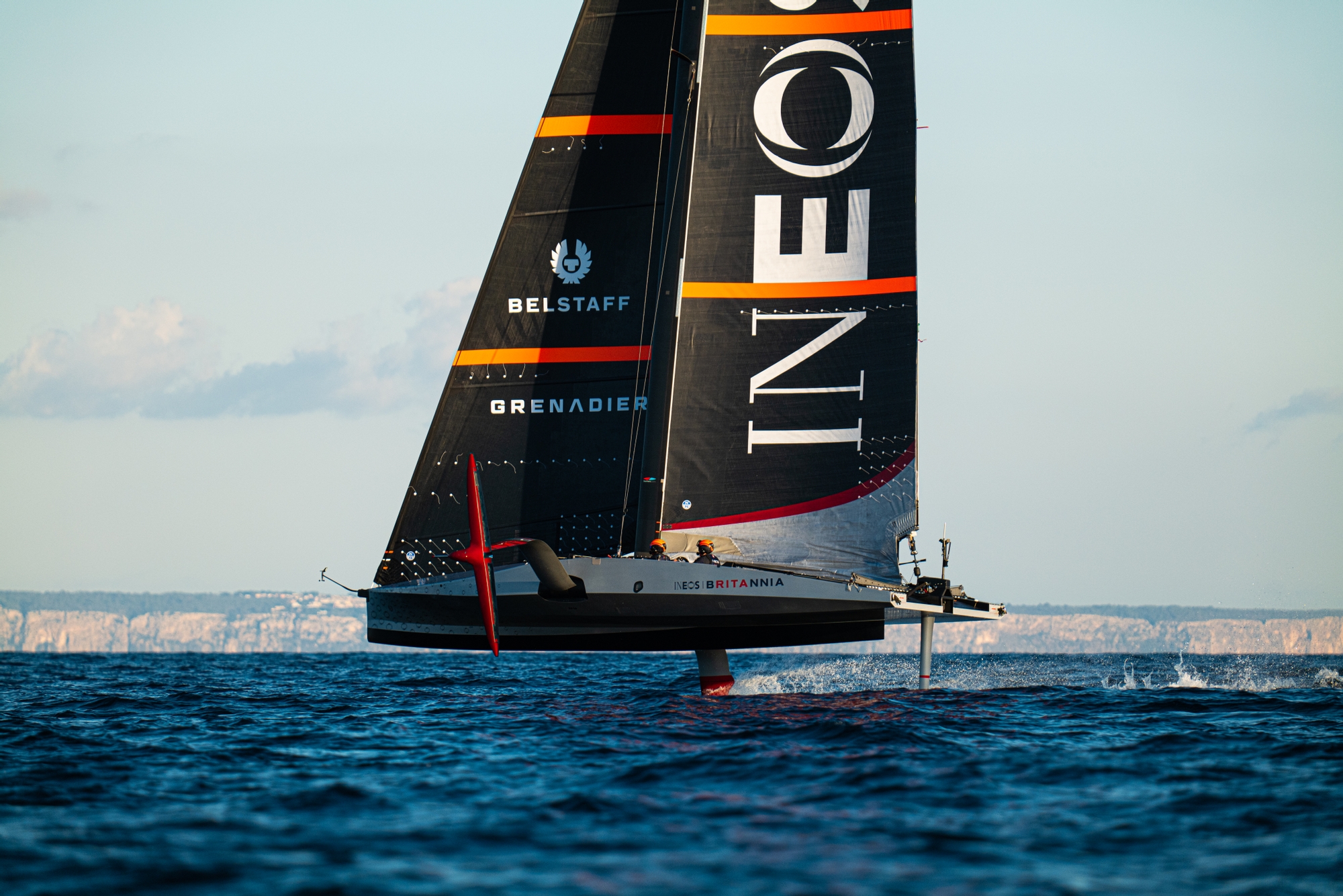
The sailors though worked hard to make the very difficult look effortless and Wilson described the toughness of the conditions, saying: “it was about a half metre swell and then a bit of a tricky chop on top of that so it made the take-offs a lot harder and then you know the whole controls are more difficult in a straight line, so it felt like a sort of scaled down Barcelona day, it was good to be out there.”
Not a day for big manoeuvres with just six tacks and six gybes attempted, INEOS Britannia stayed out until sundown before a very long tow home. Summing up the learning of the day, Rob Wilson put it right saying: “There's lots of little pieces you're learning on all of these days - how the boat reacts in the flat water, and in the sea state, and I wouldn't say it's one major thing, more the sort of sum of lots of little things.”
Little by little the British Challenge for the America’s Cup is gathering steam – and plenty of data. A good day’s work all round.
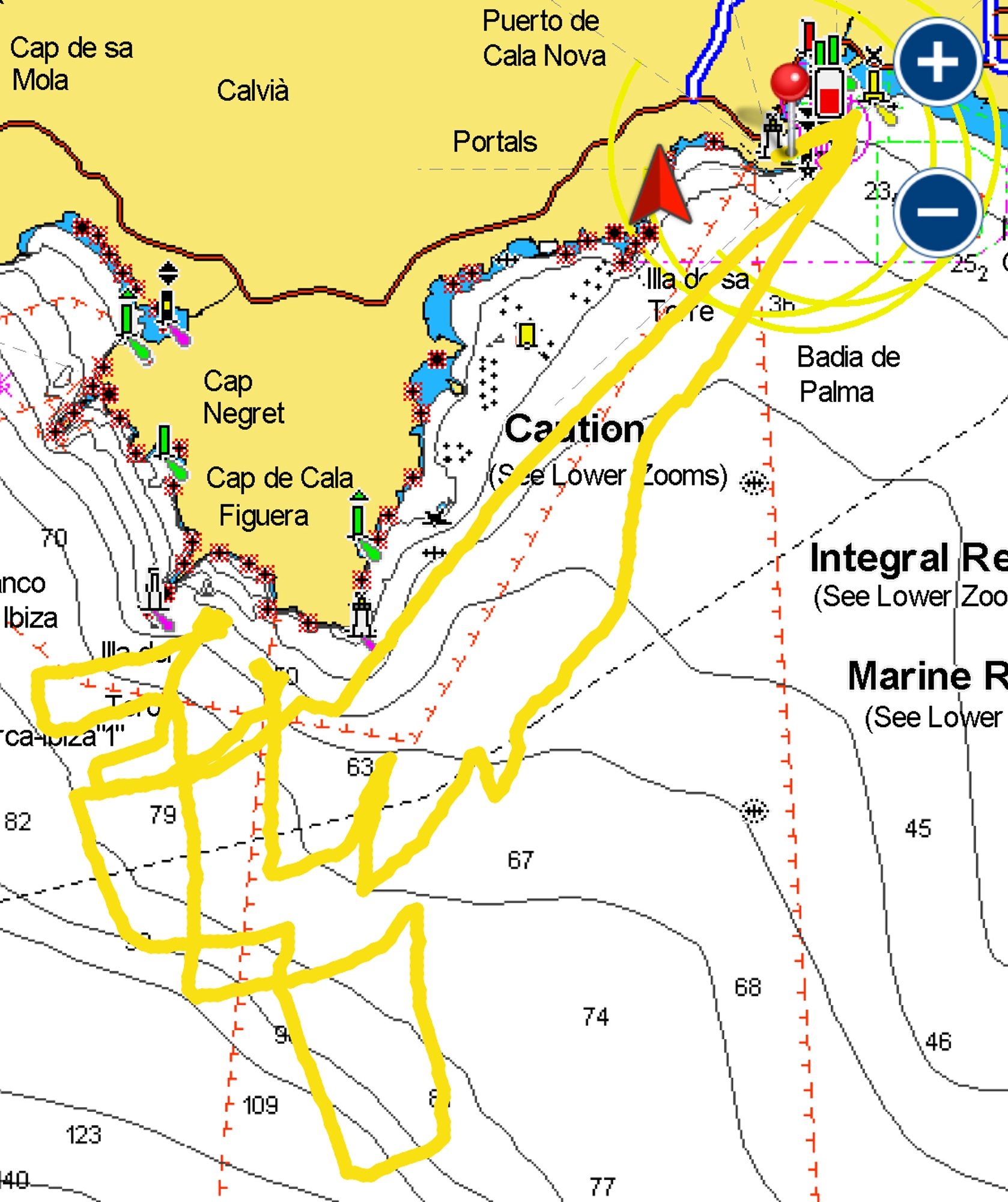
On Water Recon Notes: With a complex weather scenario in play on Palma Bay today – which involved northerly gradient breezes being negated by a nascent sea breeze created by warm sunshine and clear blue skies heating up the Mallorca landmass – INEOS Britannia's meteorological advisors called for an offshore day outside the confines of the Bay.
A scheduled 1200 dock-out was delayed until 1315 due to technical issues we believe to have been related to the pair of GPS aerials on the British LEQ12's stern quarters. Once out of the harbour and mainsail hoisted, the T6 test boat was towed south for 30 minutes at 20 knots out into the open waters of the Mediterranean.
Conditions outside the Bay comprised 9 knots of wind from 240 to 260 with a bumpy unpleasant sea state made up of a characteristic Mallorca short steep chop overlaid with a half metre swell. Not ideal conditions for foiling perhaps but the British crew – helmsmen Ben Ainslie and Giles Scott, with flight controllers/trimmers Leigh McMillan and Luke Parkinson (who swapped out for Iain Jensen during the session) – made the best of them to rack up plenty of flying time during a 50 nautical mile day.
Take-offs were mostly self-generated but there were a few tow ups during lighter patches of breeze. The crew started the day with a series of take-offs of one minute or less flights, followed quickly by another take-off. The team's coach Rob Wilson said this 'circuits and bumps' session was a planned take-off practice session.
Later in the day there were several extended foiling runs with multiple foiling tacks and gybes – some clean and others involving touch downs. The only issue the team encountered was a break required to fix an issue with the J1 (used all day) halyard lock which had released itself while the boat was in flight.
With the sun only just above the horizon at 1715 the breeze finally began to fade, putting paid to chances of anymore foiling. Sails were dropped shortly afterwards before a long (10 nm) tow back to port.
Dock out: 1314 Dock-in: 1812
Conditions: 10AM 7 knots NE, 12. 1330 outside harbour 3-4 knots NE, 1400 – 1700 offshore 9 knots from 240 to 260 droppong to under 6 knots after 1700.
Onboard Today
Helms: Giles Scott / Ben Ainslie
Crew: Leigh McMillan / Luke Parkinson
Recon Notes: Parkinson subbed out for Iain Jensen in the afternoon
Sails Used:
Mainsail (MN1-1P): 3 hours 45 minutes
J1 (J1-1): 3 hours
Total Tacks: 6 – 0 foil-to foil, 4 touch & go, 2 touchdowns
Total Gybes: 6 – 2 foil-to-foil, 4 touch & go
Recon Notes: Multiple self-take-offs with 3 tow up.
Take-off speed: 12 knots self at 45 degrees TWA (True Wind Angle)
